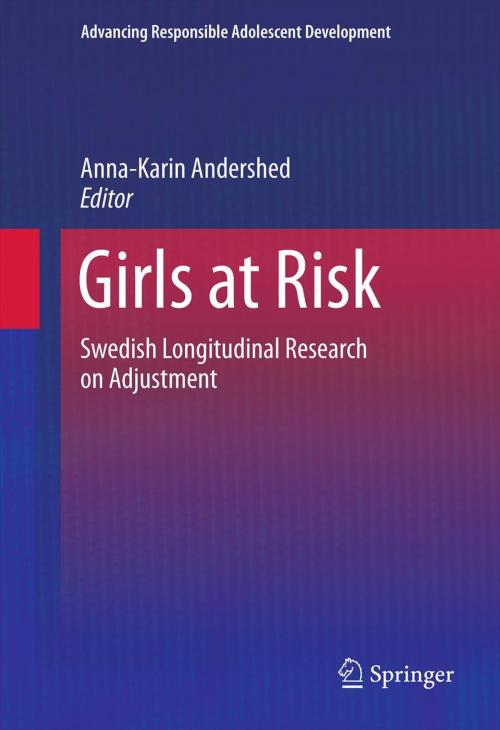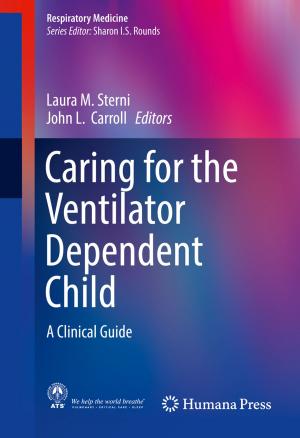Girls at Risk
Swedish Longitudinal Research on Adjustment
Nonfiction, Health & Well Being, Medical, Specialties, Psychiatry, Psychology, Child & Adolescent, Child Development| Author: | ISBN: | 9781461441304 | |
| Publisher: | Springer New York | Publication: | August 4, 2012 |
| Imprint: | Springer | Language: | English |
| Author: | |
| ISBN: | 9781461441304 |
| Publisher: | Springer New York |
| Publication: | August 4, 2012 |
| Imprint: | Springer |
| Language: | English |
Until recently, boys and men provided the template by which problem behaviors in girls and women were measured. With the shift to studying female development and adjustment through female perspectives comes a need for knowledge of trajectories of at-risk girls’ behavior as they mature. Girls at Risk: Swedish Longitudinal Research on Adjustment fills this gap accessibly and compassionately. Its lifespan approach relates the pathologies of adolescence to later outcomes as girls grow up to have relationships, raise families, and take on adult roles in society.
Coverage is balanced between internalizing behaviors, traditionally considered to be more common among females, and externalizing ones, more common among males. The book's detailed review of findings includes several major longitudinal studies of normative and clinical populations, and the possibility of early maturation as a risk factor for pathology is discussed in depth. Contributors not only emphasize "what works" in intervention and prevention but also identify emerging issues in assessment and treatment. An especially powerful concluding chapter raises serious questions about how individuals in the healing professions perceive their mission, and their clients. Although the studies are from one country—Sweden—the situations, and their potential for successful intervention, transcend national boundaries, including:
• Adolescent and adult implications of pubertal timing.
• Eating disorders and self-esteem.
• Prevention of depressive symptoms.
• Understanding violence in girls with substance problems.
• Lifespan continuity in female aggression and violence.
• A life-course perspective in girls' criminality.
With insights beyond the beaten path, Girls at Risk provides a wealth of information for researchers, clinicians and related professionals, and graduate students in child and school psychology; psychiatry; education; social work; psychotherapy and counseling; and public health.
Until recently, boys and men provided the template by which problem behaviors in girls and women were measured. With the shift to studying female development and adjustment through female perspectives comes a need for knowledge of trajectories of at-risk girls’ behavior as they mature. Girls at Risk: Swedish Longitudinal Research on Adjustment fills this gap accessibly and compassionately. Its lifespan approach relates the pathologies of adolescence to later outcomes as girls grow up to have relationships, raise families, and take on adult roles in society.
Coverage is balanced between internalizing behaviors, traditionally considered to be more common among females, and externalizing ones, more common among males. The book's detailed review of findings includes several major longitudinal studies of normative and clinical populations, and the possibility of early maturation as a risk factor for pathology is discussed in depth. Contributors not only emphasize "what works" in intervention and prevention but also identify emerging issues in assessment and treatment. An especially powerful concluding chapter raises serious questions about how individuals in the healing professions perceive their mission, and their clients. Although the studies are from one country—Sweden—the situations, and their potential for successful intervention, transcend national boundaries, including:
• Adolescent and adult implications of pubertal timing.
• Eating disorders and self-esteem.
• Prevention of depressive symptoms.
• Understanding violence in girls with substance problems.
• Lifespan continuity in female aggression and violence.
• A life-course perspective in girls' criminality.
With insights beyond the beaten path, Girls at Risk provides a wealth of information for researchers, clinicians and related professionals, and graduate students in child and school psychology; psychiatry; education; social work; psychotherapy and counseling; and public health.















